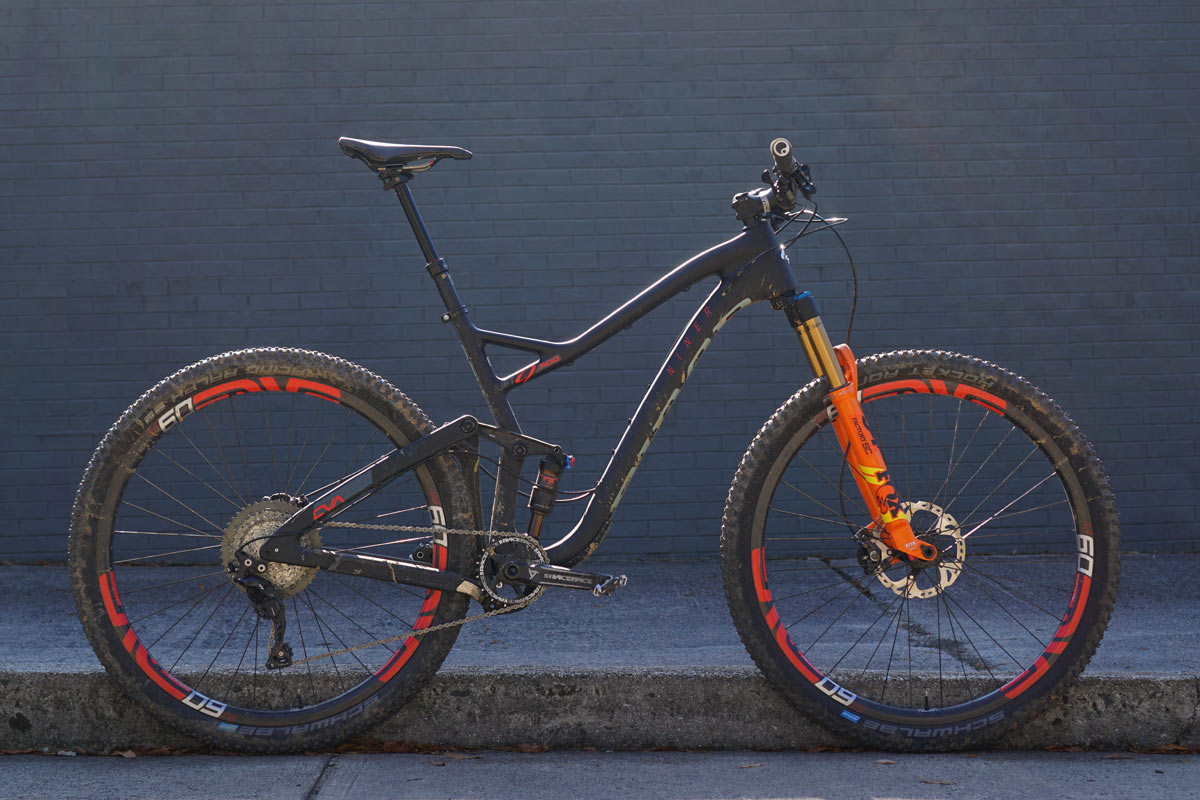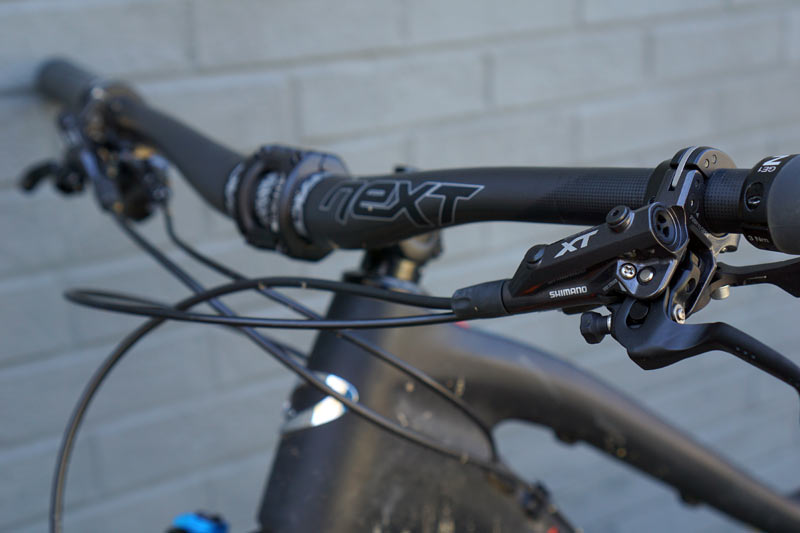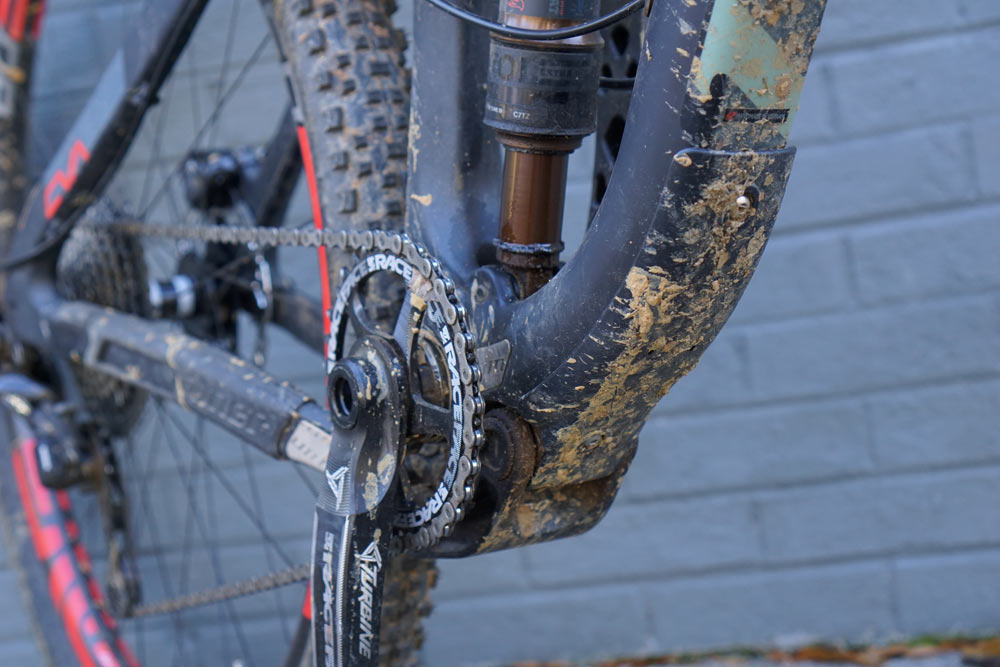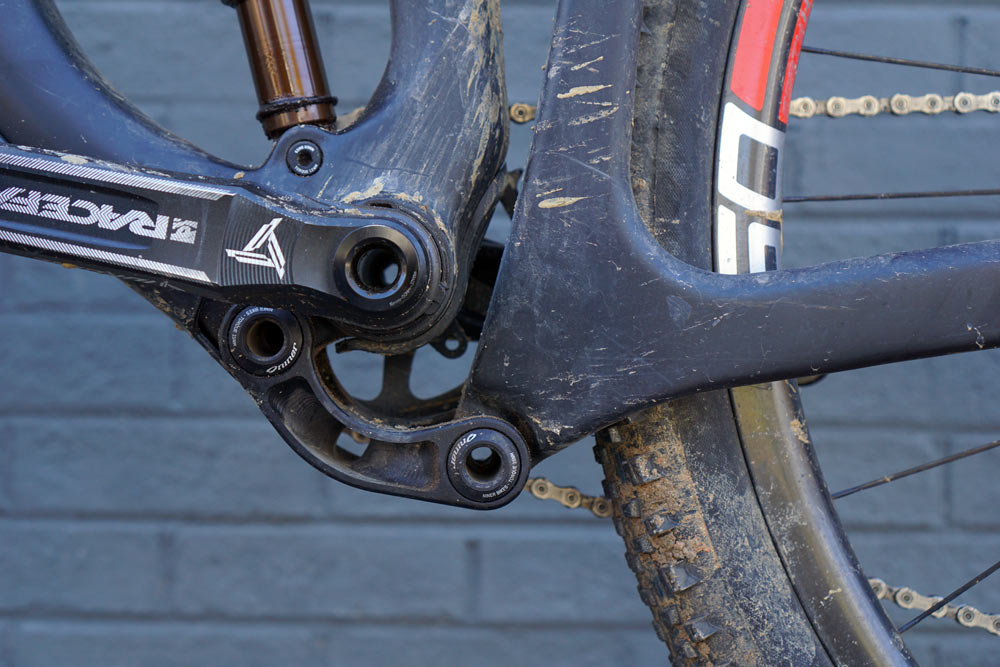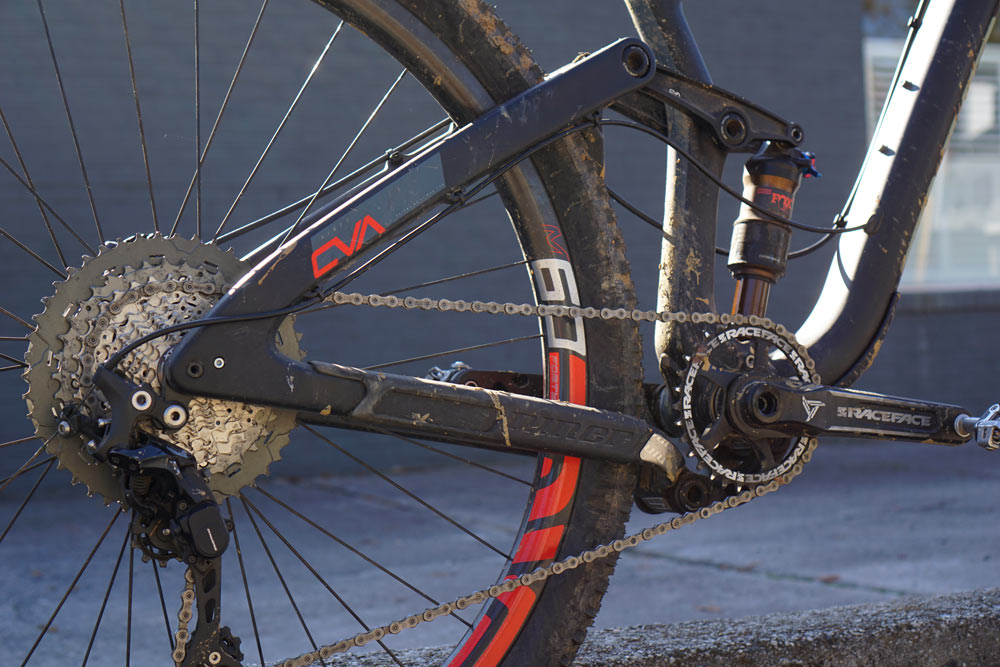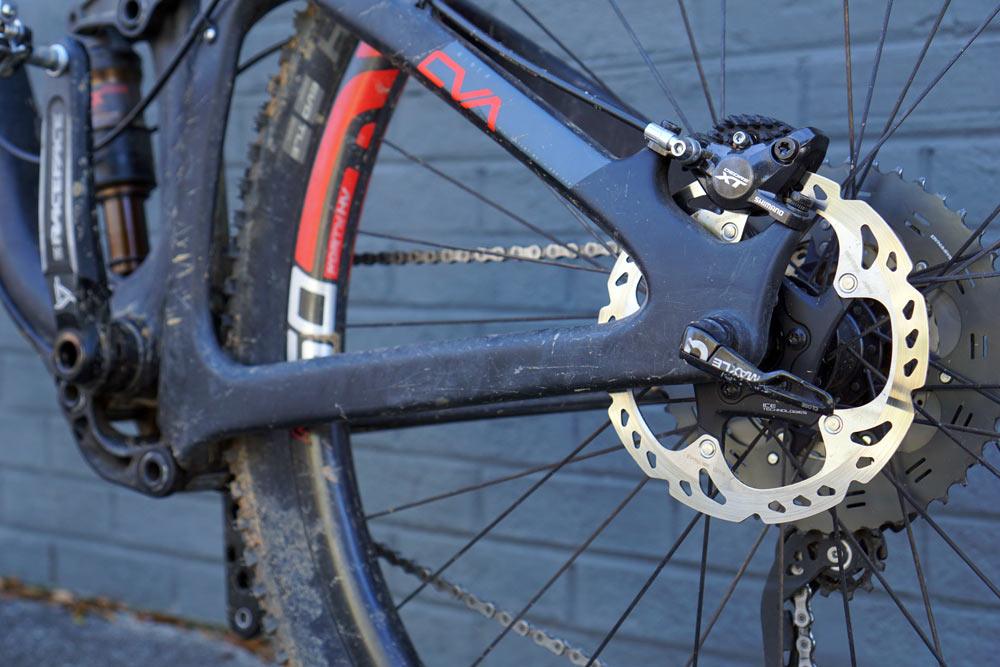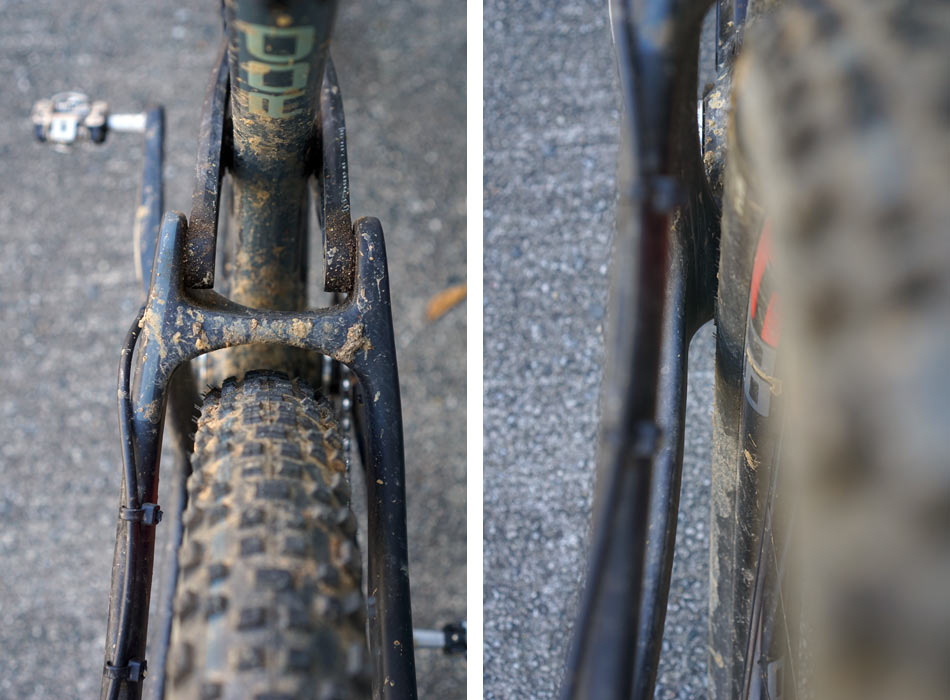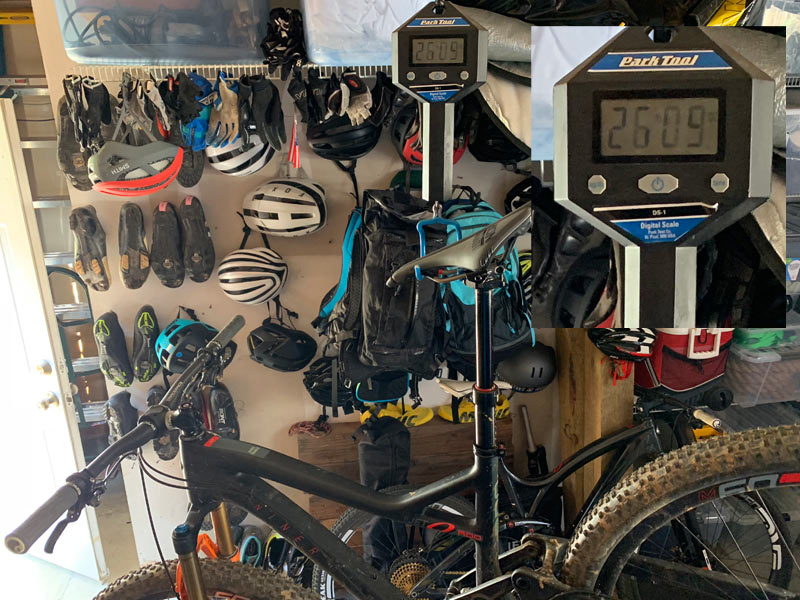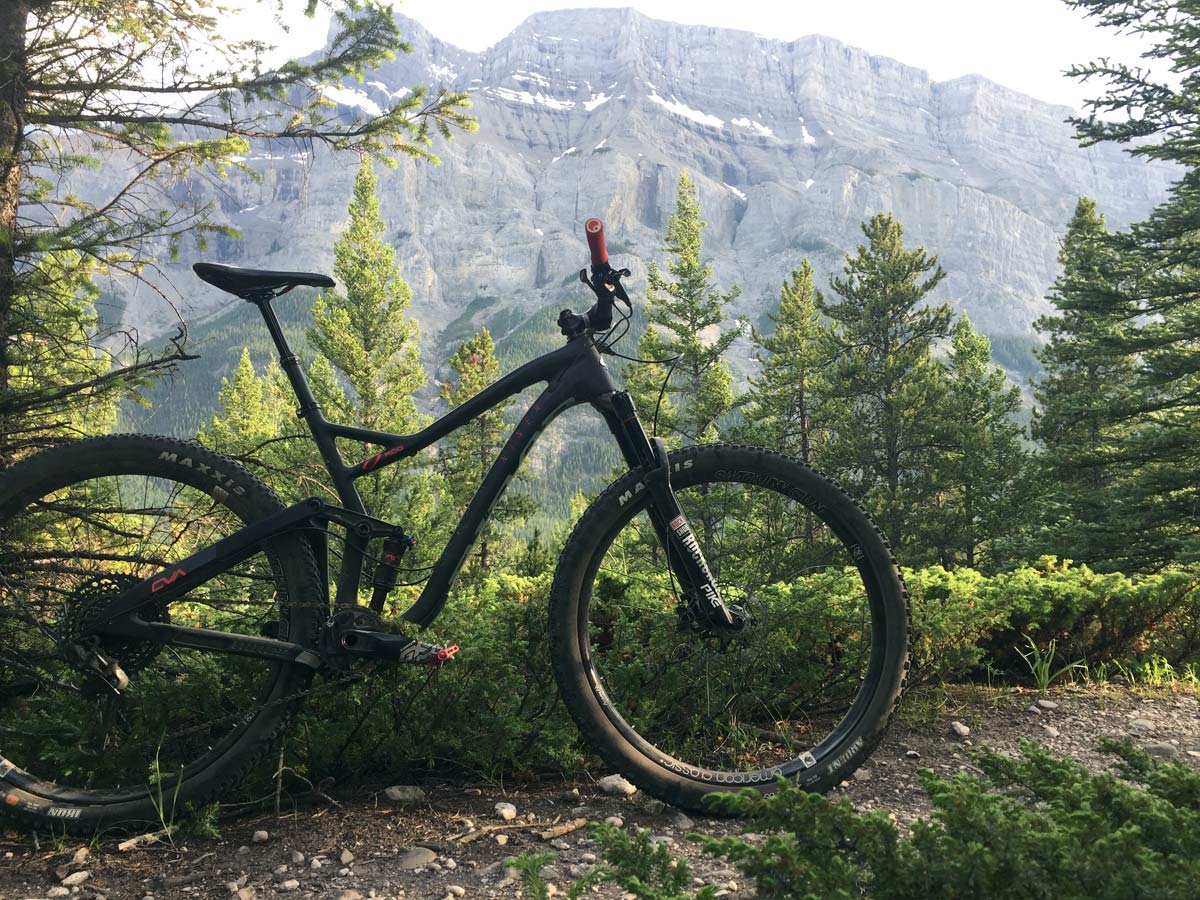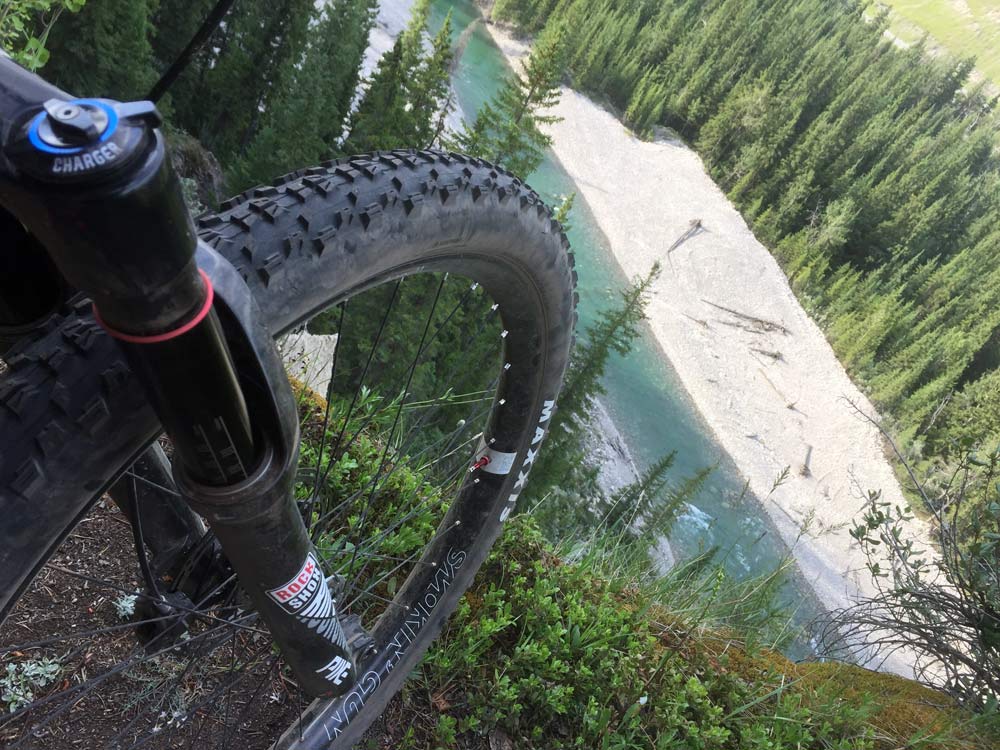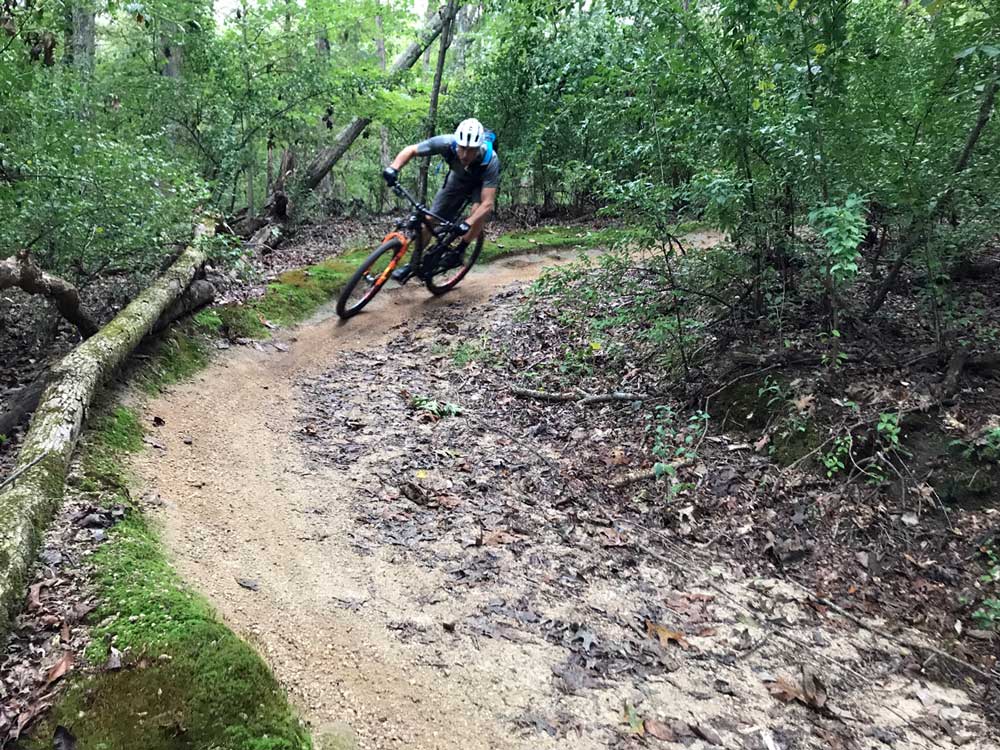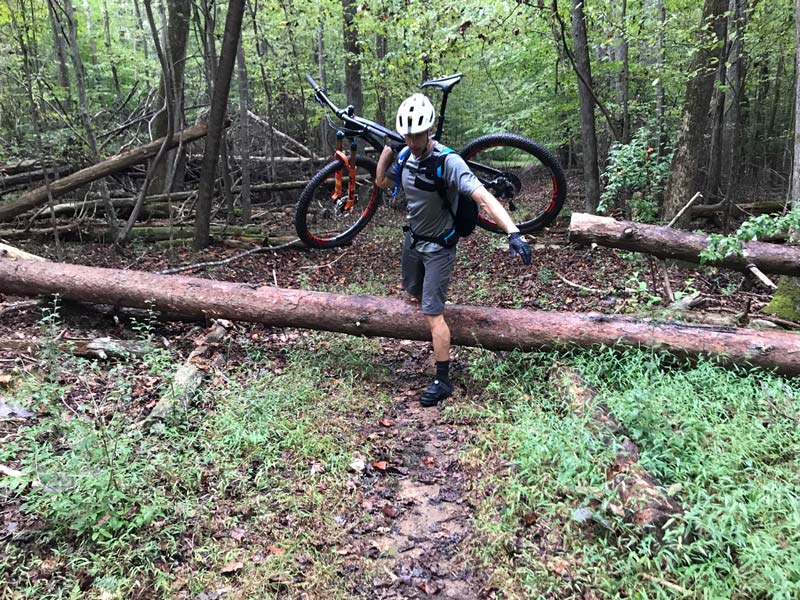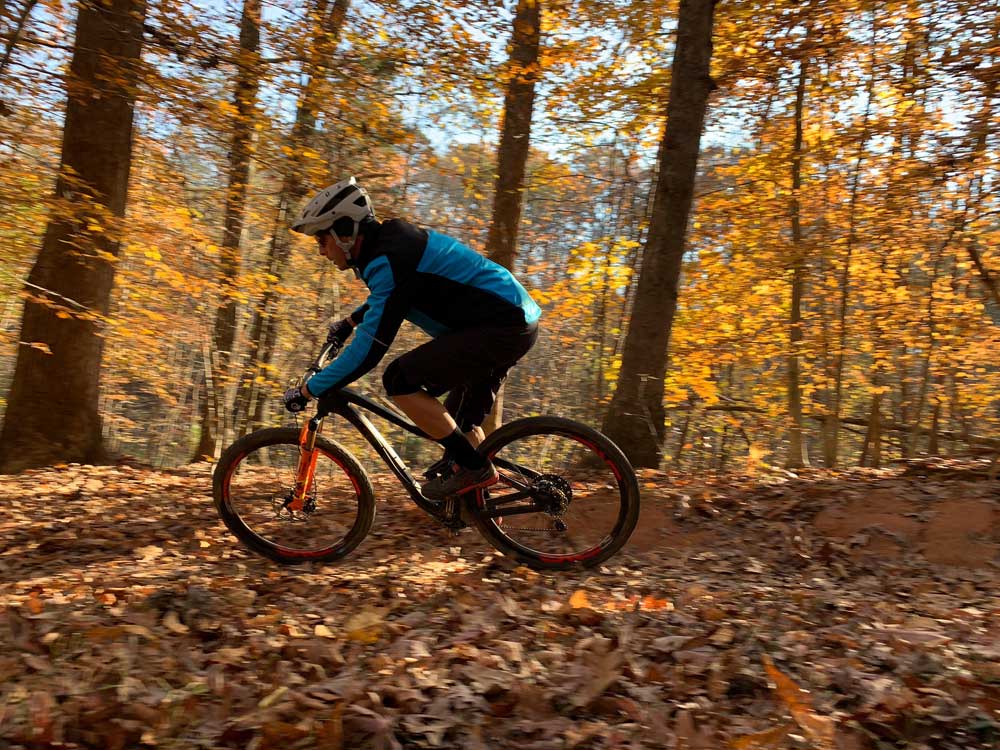I need to start this review with two statements. First, that I’ve ridden every generation of Niner JET 9 since their very first 80mm travel, round-tubed little alloy XC race bike, all the way up to this modern 120mm trail bike. And second, that I really did not want to like this new version, and I told Niner that in no uncertain terms. Let me explain.
Throughout the years, the JET 9 grew first to 100mm rear travel, stayed that way for a few iterations and added carbon RDO models. Then upped its game with more shapely alloy models. Finally, it’s morphed from a pure XC bike into this mid-travel trail bike spec’d with a beefy 130mm fork and the option to run 27.5+ wheels. And that’s where they lost me. You see, I L.O.V.E.D. the prior generation. Over the years I’ve had JET 9’s down to 22.9lbs in unadulterated race form without giving up durability. My last one hovered around 24 pounds and is so dialed for my local trails and my riding style that it’s became a perfect extension of my body. And then they went and changed it. The Nerve! How Dare They?
And then I started riding it…
Niner JET 9 RDO Tech Overview & Actual Weight
Before we dive into the review, a little about this bike. This one is actually a MY2017, so it arrived before they made the recent (and much appreciated) cable routing changes that got them away from your legs and smoothed out the shift path. That said, the JET 9 still benefits from slick, high quality rear shift cables and housing. There are a few bends that can cause real friction if you’re using the cheap stuff. I noticed it more with Shimano setups than with SRAM, but it’s there.
I’ve used it to test the SRAM GX Eagle group, but have returned the stock Shimano XT group to the bike for now. The current lineup is only offered with SRAM Eagle groups for complete bikes, and the frame colors are different, too, so check Niner’s site for the latest spec options.
As you see it here, I’ve also swapped out the fork (it comes with a standard Fox 34 130mm, this is the much lighter Fox 34 SC 120mm). I’ve kept the Race Face bar and stem, but swapped the KS dropper post for a longer 9point8 Fall Line unit which has been mostly flawless (full review on that coming later).
I’ve also kept the Race Face Turbine alloy cranks on it except when testing the GX, and kept the stock rear Fox Factory DPS Evol shock. With this new generation came the return to a threaded BB, which will still fit Race Face’s 30mm spindle when you use that brand’s (or a compatible 3rd party) bottom bracket. I’ve had zero problems with this setup, which is why we all love threaded BBs. The frame has ISCG05 mounts and an integrated rubberized lower frame shield and chainstay guard. Titanium chain protection plates are glued to the frame in key spots, too.
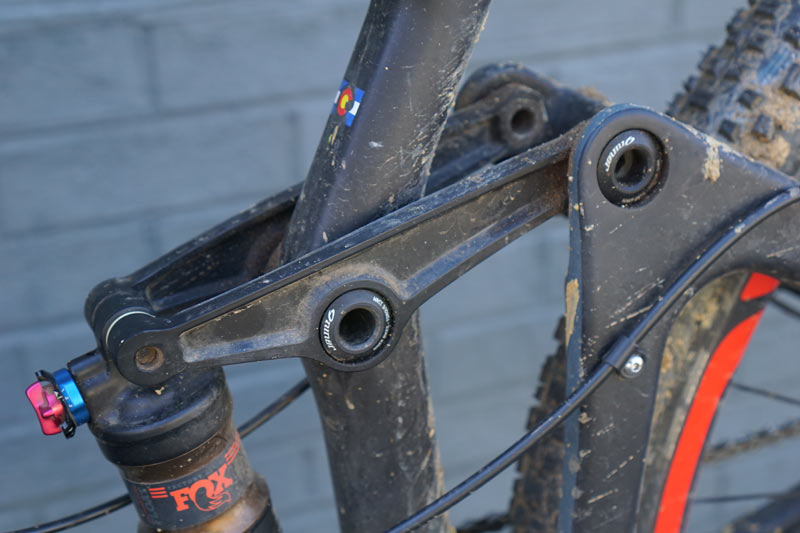
Th upper rocker is alloy and uses oversized bearings. It’s worth noting that on the last five JET 9 bikes I’ve had in for long term use (as in, multi-year) have all been to use them as product test mules on which I test a lot of other stuff. Everyone one of the bikes has had perfect pivot bearing performance and developed no noticeable play. Five bikes, eight or more years of riding them, zero pivot bearing issues.
Niner’s CVA suspension platform uses upper and lower links to control the rear triangle’s path. As travel has gotten longer, they’ve had to get more creative with how they manage this design because, ultimately, it has to avoid hitting the BB shell under full compression. While I haven’t knocked this one, I have smacked the lower link on the 150mm travel RIP 9 pretty hard. It’s alloy, so it survived, but something to be aware of if you routinely smash your frames…a really strong ISCG-mounted bash guard might be a good investment.
As Niner’s bikes have become more carbon and, now, more robust, the frame stiffness has improved. The original alloy JET 9 was admittedly flexy, but this one’s more than adequate for modern trail riders.
The frame holds calipers close with 160mm rotors, but will work with up to 180mm rear rotors.
Max tire clearance is claimed at 29×2.5, which is pretty big. Here, it’s shown with Schwalbe 2.25 on the stock ENVE M50fifty rims, and they measure out just about to what’s printed on them. Shown further down are the stock Maxxis 29×2.4 tires spread out on American Classic’s ultra wide Smoking Gun rims, which pushed them just beyond 2.5. Even so, I never had any rubbing or gunk-trapping issues.
Actual Weight & Sizing Notes
While your weights will vary, as built up here (other swaps include Ergon grips, Prologo NDR saddle, HT Components M1 pedals), the size Large bike weighs in at 26lb 9oz (12.05kg). I’d put the realistic riding range at anywhere from 29lb down to 26lb without taking anything to extremes.
UPDATE: Stock weight out of the box was 26lb 6.5oz (11.99kg) without pedals, so despite the lighter fork, the addition of heavier grips and longer dropper added a bit of weight. It’s worth noting that my bike shipped with a shorter 125mm dropper, which I was unable to get high enough, but size Large JET 9 bikes now ship with a longer 150mm dropper as stock.
Which brings up a sizing point worth making. I’m 6’2″ and I test rode the L and XL bikes back and forth several times before committing to the Large. My height sits right between their recommended ranges for each, but the Niner XL bikes tend to be larger than others, which is great for really tall riders. For me, the Large was a more maneuverable bike that fit well, especially with the longer travel fork on the front and when pointing it down. Which isn’t to say it feels small on the climbs, it’s actually just right. But, depending on your proportions, it’s worth test riding both to see which would fit you better. For comparison, I would definitely ride an XL in Santa Cruz, Specialized, Norco, Cannondale, and most other major brands.
Niner JET 9 RDO Ride Review
Over the course of this review, I’ve ridden the JET 9 on backcountry trails throughout Banff, Canada; the lift served mecca of Park City, Utah; throughout North Carolina and Virginia; as well as Colorado, South Dakota, and various other spots around the U.S. What I like most about this bike is its capability on a wide variety of terrain, and the versatility to turn it into what you need.
As shown above and below, the 130mm Rockshox Pike paired well with the stock Maxxis tires pushed to their limits on American Classic’s ridiculously wide rims. This combo made for a reasonably light all-conditions bike that I traveled the country with, and it was ready for just about anything.
I also like that Niner is able to translate their ride feel and handling from one bike to the next, and between models. So, if you’re already a fan, moving up or down the travel spectrum will feel natural. As will upgrading your bike from the prior generation JET 9 to this one.
The frame is plenty stiff, which let me focus on what the suspension and tires were doing. Speaking of suspension, I ride the JET 9’s rear shock in “pedal” or “open” modes most of the time, and mostly open. It’s efficient enough that I can pedal hard without feeling like I’m wasting energy, and that allows the rear end to soak up anything coming its way.
It’s particularly adept at molding to the ground on technical climbs, something that friends who’ve borrowed the bike have commented on as well. Yes, there’s a little suspension bob under harder pedaling, but I hardly notice it unless I’m exaggerating my movements. For smoother, longer, sustained climbs, I’ll just switch modes.
While none of us love hike-a-bikes and portaging, it’s worth noting that the small connector top tube that leads into the seat tube makes a great handle for lifting the bike up and over stuff.
Originally, I was kinda upset that they’d messed with one of my favorite bikes. This wasn’t just a new version, it really was an all-new bike. But I’ve grown to love it, and it’s become my daily driver for local trails, and an easy choice when heading somewhere new unless I know I’ll need something bigger. For most of my rides, the 120mm fork matches the rear and provides the snappier XC-like handling I want. For more adventurous terrain, a simple swap to the 130mm fork that comes stock gives you range to explore.
All in all, the current Niner JET 9 RDO is a modern trail bike worth checking out. It’s served me well for the past two summers, and I suspect it’ll continue to do so for years to come. Until they change it again…
